 August 15, 2019 John E. Ross, KD8IDJ, Editor
| ||||||
ARRL Board Pledges to Oppose French Proposal for 144 -146 MHz At its July meeting, the ARRL Board of Directors resolved that "at the appropriate time" ARRL will oppose a proposal by France to include 144 - 146 MHz among spectrum to study for non-safety Aeronautical Mobile Service applications with an eye toward sharing the spectrum with the Amateur Services. The action came as the Board met July 19 - 20 in Windsor, Connecticut for its second meeting of 2019.
ARRL International Affairs Vice President Jay Bellows, K0QB, advised that if it is added as an agenda item for study for WRC 2023, the Board should consider action. Digital Communication Issues The Board instructed Washington Counsel David Siddall, K3ZJ, to take appropriate steps to obtain FCC approval for several changes to the Part 97 Amateur Radio Service rules. The requested changes stemmed from discussions regarding the interference potential of automatically controlled digital stations (ACDS); the prohibition of Amateur Radio message traffic that's encoded to obscure its meaning, and false assertions that ARRL -- despite its record of steadfast opposition -- supports or encourages encrypted transmissions. The Board directed that the FCC be asked to make rule changes that would:
The Board also wants to request that the FCC remind radio amateurs "by whatever appropriate means available" of the current prohibition in §97.113(a)(4) and Article 25, §2 of the International Radio Regulations against transmitting "messages encoded for the purpose of obscuring their meaning." ARRL-initiated mediation efforts for rival parties to reach consensus on all or some of the issues they raised in the so-called "Symbol Rate" proceeding ended a few days prior to the July Board meeting with useful discussion but no agreement among those parties on recommendations to the FCC. Other Actions The Board tasked its Administration and Finance (A&F) Committee to assess the feasibility of a Research Working Group (RWG) and, if warranted, to establish one. The group would help the Board and ARRL management to better gauge trends, collect more accurate membership information, and more closely track the progress of programs.
The Board directed that the rules for all ARRL contests be revised to require that each claimed contact include contemporaneous direct initiation by the operator on both sides of the contact. Contact initiation may be local or remote. The Board extended the same requirement to the DXCC program. The Board voted to add a QRP Single Operator subcategory for the ARRL RTTY Roundup. The Board acted to rescind its public censure of ARRL Southwestern Division Director Richard Norton, N6AA. The censure action, taken at a special Board meeting in November 2017, was based on Norton's alleged violation of the ARRL Policy on Board Governance and Conduct of Members of the Board of Directors and Vice Directors, adopted in January of that year and itself since rescinded. Minutes of the July ARRL Board of Directors meeting are available on the ARRL website. Read more. ARRL Board Confers Awards At its second meeting of 2019, the ARRL Board of Directors conferred several awards. Philip J. McGan Silver Antenna Award The Board bestowed the 2019 Philip J. McGan Silver Antenna Award on John Wells, W4CMH, of Fort Myers, Florida. The award recognizes ARRL Knight Distinguished Service Award
Technical Innovation Award
The Board said FT8 has "proven effective for all amateurs" in times of poor propagation, revolutionizing many aspects of ham radio. Technical Service Award
Doug DeMaw, W1FB, Technical Excellence Award
A well-known author on antenna topics and a technical resource, Severns wrote "Insulated Wire and Antennas" for the March/April 2018 issue of QEX. The Board's Program and Services Committee concurred with the recommendation of the ARRL editorial staff in designating Severns as the award's recipient. Read more. Logic Switch Uses No Electric Current The Smart2.0 Newsletter for May 13 reported on a logic switch that uses no electric current. According to the article, researchers at New York University say the new method of controlling magnetic circuits is energy efficient, promising lower heat and energy costs in applications such as large server farms or in the artificial intelligence arena, which requires massive amounts of memory.
"The method uses a voltage-controlled topological spin switch (VTOPSS) that requires only electric fields, rather than currents, to switch between two Boolean logic states, greatly reducing the heat generated and energy used," the article explains. "Spin can be transported without a charge with the use of a topological insulator -- a material whose interior is insulating but that can support the flow of electrons on its surface." Compared with existing spin-based devices, researchers claim the VTOPSS offers 10 to 70 times lower energy dissipation and 70 to 1,700 times lower energy-delay product. The VTOPSS technology, the researchers add, "offers competitive metrics compared with existing CMOS technology, and interconnect issues that dominate the performance in CMOS logic are relatively less significant for the VTOPSS, enabling it to switch between two states more effectively." "Imagine if you were preparing a recipe and had to go into a different room anytime you needed an ingredient before returning to the kitchen to add it," says NYU Tandon School of Engineering Assistant Professor Shaloo Rakheja, the principal author of an academic paper on VTOPSS. "It's just as inefficient when the portions of computing hardware needed to do a calculation and the portions needed to store it are not well integrated." The article noted that VTOPSS can reduce reliance on cloud memory, potentially making computing safer, because it would be harder for to gain access to a system's hardware. The Doctor Will See You Now! "The Legendary G5RV Antenna" is the topic of the new (August 15) episode of the ARRL The Doctor is In podcast. Listen...and learn!
Every 2 weeks, your host, QST Editor-in-Chief Steve Ford, WB8IMY, and the Doctor himself, Joel Hallas, W1ZR, will discuss a broad range of technical topics. You can also email your questions to doctor@arrl.org, and the Doctor may answer them in a future podcast. Enjoy ARRL The Doctor is In on Apple iTunes, or by using your iPhone or iPad podcast app (just search for ARRL The Doctor is In). You can also listen online at Blubrry, or at Stitcher (free registration required, or browse the site as a guest) and through the free Stitcher app for iOS, Kindle, or Android devices. If you've never listened to a podcast before, download our beginner's guide. Dayton Hamvention Club of the Year to Hold Ham Bootcamp at New England Convention The Nashua (New Hampshire) Area Radio Society (NARS) will conduct a free Ham Bootcamp at the ARRL New England Division Convention next month to encourage and assist new and inexperienced radio amateurs in becoming more active and engaged in the various facets of ham radio. NARS, the Dayton Hamvention® Club of the Year for 2019, operated a guest exhibit for ARRL at this The newly renamed HamXposition -- formerly known as "Boxboro" -- is hosting the ARRL New England Division Convention September 6 - 8 in Boxborough, Massachusetts. Exhibits will open on Saturday and Sunday. The NARS Ham Bootcamp will cover a broad range of activities. The club describes the event as "a package of hands-on activities designed to help recently licensed and upgraded hams to get on the air and have fun." The Bootcamp is also aimed at prospective hams interested in seeing what Amateur Radio has to offer. The Ham Bootcamp will take place at HamXposition on Saturday, September 7, from 9 AM to noon. Maximum enrollment is 100, first come, first served. Read more. The K7RA Solar Update Tad Cook, K7RA, Seattle, reports: No sunspots were visible over the August 8 - 14 reporting week. Spaceweather.com says 67% of days so far this year have been spotless. For all of 2018, it was 61%. At solar minimum in 2008 and 2009, spotless days ran 73% and 71%, respectively. Solar flux has been minimal, unremarkable, and barely changed -- edging up from 67.2 to 67.4. Predicted solar flux for the next 45 days is also unremarkable, at 67 for August 15 - September 28.
In Friday's bulletin, look for reports on recent 10-meter propagation. Sunspot numbers for August 8 - 14 were 0, 0, 0, 0, 0, 0, and 0, with a mean of 0. The 10.7 centimeter flux was 68.6, 67.2, 67.2, 67.6, 67.2, 66.8, and 67.4, with a mean of 67.4. Estimated planetary A indices were 7, 6, 8, 6, 5, 7, and 5 with a mean of 6.3. The middle latitude A index was 6, 7, 8, 7, 7, 8, and 5, with a mean of 6.9. A comprehensive K7RA Solar Update is posted Fridays on the ARRL website. For more information concerning radio propagation, visit the ARRL Technical Information Service, read "What the Numbers Mean...," and check out K9LA's Propagation Page. A propagation bulletin archive is available. Monthly charts offer propagation projections between the US and a dozen DX locations. Share your reports and observations. Just Ahead in Radiosport
See the ARRL Contest Calendar for more information. For in-depth reporting on Amateur Radio contesting, subscribe to The ARRL Contest Update via your ARRL member profile email preferences. Results Posted for USA, IARU Region 2 ARDF Championships in North Carolina The results of the 19th USA ARDF Championships and 10th IARU Region 2 ARDF Championships in Amateur Radio Direction Finding (ARDF), held earlier this month in North Carolina, are now in the record books. Results from these championships will determine the makeup of ARDF Team USA at the 20th ARDF World Championships, set for September 2020 in Serbia.
Separate youth and adult courses ensured regulation courses for foxhunters of all ages, with 36 US competitors. Visitors from Australia, Germany, and China practiced and competed alongside Team USA hopefuls. Competitors ranged in age from 8 to 73. Adult and youth championships were held simultaneously, with their separate events held on opposite radio bands to avoid interference. Events began on August 1, with foxoring, a combination of radio direction finding and classic orienteering on 80 meters, followed the next day with the sprint event. The classic 2-meter and 80-meter adult and youth competitions took place on August 3 and 4. "Sprint ARDF is a fast-paced event, where quick thinking generally beats fast running," ARRL ARDF Co-Coordinator Charles Scharlau, NZ0I, explained. "The courses are short enough that elite competitors can complete them in 15 minutes. Because of the large number of young people taking part, awards were presented in youth categories M10, M12, M14, M16, W12, and W14. Parents of younger age-group participants were allowed to follow their sons and daughters but not assist them.
"American youth competitors held their own, despite the stiff competition," Scharlau said. In a crowded field of 10 M14 competitors, Tobias Reed took overall gold in the 80-meter classic, silver in sprint, and bronze in foxoring. Other American youth medalists included M12 competitor Marcus Enochs, who won silver in foxoring; M10 competitor Gavin Burkhead, who picked up the gold in foxoring, and M10 competitor James Harker, who went home with gold in the 2-meter classic. Contact the ARRL ARDF Committee for more information on ARDF and on attending, participating in, or hosting ARDF competitions. ARDF participants do not need an Amateur Radio license. For more information on Amateur Radio Direction Finding, visit the Homing In website of Joe Moell, K0OV. Young Radio Amateurs from around the World Enjoying YOTA Summer Camp The 9th annual Youngsters on the Air (YOTA) Summer Camp opened August 11 in Bankya, Bulgaria, under the sponsorship of the Bulgarian Federation of Radio Amateurs (BFRA), Bulgaria's International Amateur Radio Union member-society. After welcoming words from BFRA and IARU Region 1 "There is unfortunately no team from Region 2 (the Americas) taking part this year," IARU Region 1 Youth Working Group Chair Lisa Leenders, PA2LS, told ARRL. "Most [participants] are from Europe, but also South Africa, Algeria, Tunisia, and New Zealand." Participants all are under the age of 26. Given the international nature of Amateur Radio, cultural exchange won't be in short supply, with attendees sharing national cuisine and wearing their respective traditional dress. A YOTA intercultural evening, As they assemble circuit boards, participants learn how to use test equipment. More experienced youngsters help those with less soldering experience. Operating the camp's LZ19YOTA ham station has been part of the mix. Youth teams are attending from Albania, Algeria, Bulgaria, Croatia, Czech Republic, Estonia, Ethiopia, Finland, France, Germany, Hungary, Iceland, Italy, Kosovo, Lithuania, New Zealand, North Macedonia, Romania, Serbia, Slovakia, South Africa, Spain, Sweden, Tanzania, The Netherlands, Tunisia, Turkey, and the UK. The YOTA Summer Camp in Bulgaria continues through August 17. LightSail 2 Demonstrates Flight by Light The Planetary Society's crowdfunded LightSail 2 spacecraft is successfully raising its orbit solely on the power of sunlight. Since unfurling the spacecraft's solar sail on July 23, mission managers have been optimizing the way the spacecraft orients itself during solar sailing. After a few tweaks, LightSail 2 began raising its orbital apogee, something the mission team said demonstrated the mission's primary
goal of "flight by light for CubeSats." Continuing to sail on sunlight in Earth orbit, the spacecraft's orbital apogee hit 729 kilometers (approximately 452 miles) as of August 5, an increase of 3.2 kilometers (nearly 2 miles) since sail deployment. LightSail 2 launched on June 25, and it deployed on July 2 from Prox-1, a Georgia Tech student-built spacecraft the size of a small washing machine. Using the Experimental License call sign WM9XPA, LightSail 2 automatically transmits a beacon packet on 437.025 MHz (9,600 bps FSK) every few seconds, which can be decoded into 238 lines of text telemetry describing the spacecraft's health and status -- everything from battery status to solar sail deployment motor state. Every 45 seconds, the spacecraft transmits "LS2" in CW on 437.025 MHz. More information is on The Planetary Society website. -- Thanks to The Planetary Society In Brief...
Upcoming ARRL Section, State, and Division Conventions
Find conventions and hamfests in your area.
. .
Subscribe to...
Free of charge to ARRL members...
| ||||||
.jpg) The Board pointed out that 144 - 146 MHz is a primary global Amateur Radio allocation and the band enjoys widespread use for emergency communication. It also noted the investment by radio amateurs of money and effort to build repeaters, beacons, space infrastructure, and propagation research systems that have global reach. The AMSAT and ARISS communities would be severely affected, the Board observed.
The Board pointed out that 144 - 146 MHz is a primary global Amateur Radio allocation and the band enjoys widespread use for emergency communication. It also noted the investment by radio amateurs of money and effort to build repeaters, beacons, space infrastructure, and propagation research systems that have global reach. The AMSAT and ARISS communities would be severely affected, the Board observed.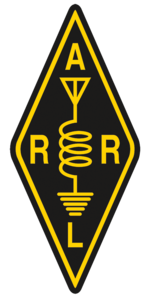 (ACDS) below 30 MHz, regardless of occupied bandwidth, to operate only within the ACDS bands designated in §97.221(b) of the Amateur Service rules.
(ACDS) below 30 MHz, regardless of occupied bandwidth, to operate only within the ACDS bands designated in §97.221(b) of the Amateur Service rules..jpg)
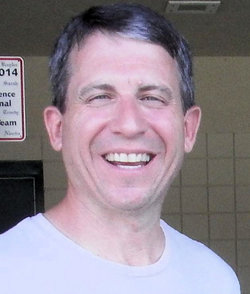 the work of ARRL's public relations volunteers to keep Amateur Radio visible in their communities. Wells was cited for encouraging media to cover stories on emergency communication during hurricanes in southwestern Florida, the use of Amateur Radio to search for clues in the disappearance of pilot Amelia Earhart, the engagement of youth in talking to an astronaut through the ARISS program, and the importance of ARRL Field Day as an annual event to help operators enhance their emergency communication skills.
the work of ARRL's public relations volunteers to keep Amateur Radio visible in their communities. Wells was cited for encouraging media to cover stories on emergency communication during hurricanes in southwestern Florida, the use of Amateur Radio to search for clues in the disappearance of pilot Amelia Earhart, the engagement of youth in talking to an astronaut through the ARISS program, and the importance of ARRL Field Day as an annual event to help operators enhance their emergency communication skills.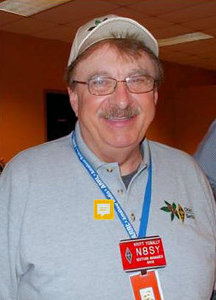 The Board designated Ohio Section Manager Scott Yonally, N8SY, to receive the 2019 ARRL Knight Distinguished Service Award, which each year recognizes an outstanding Section Manager. The Board said Yonally "is tireless in his efforts to be present and visible all over the state, representing the ARRL and Amateur Radio with a positive and forward-thinking attitude." The Board also noted that Yonally edits the monthly Ohio Section Journal and the weekly Postscript to provide Ohio Section ARRL members with the latest news.
The Board designated Ohio Section Manager Scott Yonally, N8SY, to receive the 2019 ARRL Knight Distinguished Service Award, which each year recognizes an outstanding Section Manager. The Board said Yonally "is tireless in his efforts to be present and visible all over the state, representing the ARRL and Amateur Radio with a positive and forward-thinking attitude." The Board also noted that Yonally edits the monthly Ohio Section Journal and the weekly Postscript to provide Ohio Section ARRL members with the latest news..JPG) The success of the FT8 digital mode prompted the Board to grant the 2019 ARRL Technical Innovation Award to the FT8 development team, led by Joe Taylor, K1JT, and Steve Franke, K9AN.
The success of the FT8 digital mode prompted the Board to grant the 2019 ARRL Technical Innovation Award to the FT8 development team, led by Joe Taylor, K1JT, and Steve Franke, K9AN.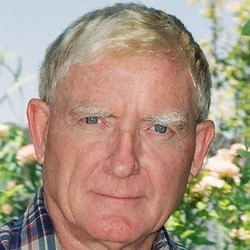 The Board conferred the 2019 Technical Service Award jointly on Alan Applegate, K0BG; and Hector Morales, NP3IR. Applegate was honored for his expertise in mobile Amateur Radio activity. In 2004, he created "A Website for Mobile Amateur Radio Operators" that has become one of the most successful in Amateur Radio.
The Board conferred the 2019 Technical Service Award jointly on Alan Applegate, K0BG; and Hector Morales, NP3IR. Applegate was honored for his expertise in mobile Amateur Radio activity. In 2004, he created "A Website for Mobile Amateur Radio Operators" that has become one of the most successful in Amateur Radio.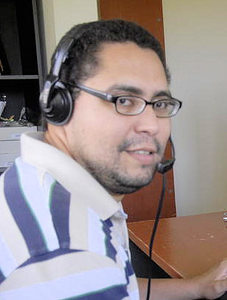 Morales, affectionately referred to as "The Professor" by many of those he has helped teach and train, was cited for his "legacy of providing educational, training and support activities to the amateur community in Puerto Rico" and for being instrumental in translating and developing teaching materials in Spanish, including training manuals.
Morales, affectionately referred to as "The Professor" by many of those he has helped teach and train, was cited for his "legacy of providing educational, training and support activities to the amateur community in Puerto Rico" and for being instrumental in translating and developing teaching materials in Spanish, including training manuals. The Board conferred the 2019 Doug DeMaw, W1FB, Technical Excellence Award to Rudy Severns, N6LF.
The Board conferred the 2019 Doug DeMaw, W1FB, Technical Excellence Award to Rudy Severns, N6LF.(1).jpg)
 Sponsored by
Sponsored by .JPG) year's show. It will also sponsor a
year's show. It will also sponsor a 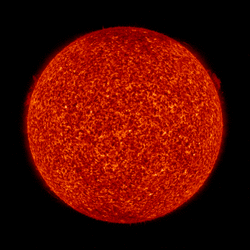 Predicted planetary A index is 5 on August 15; 8 on August 16; 5 on August 17 - 18; 8 on August 19; 5 on August 20 - 25; 8 on August 26 - 28; 5 on August 29 - 31; 38 and 14 on September 1 - 2; 5 on September 3 - 5; 8 on September 6 - 8; 5 on September 9 - 11; 8 on September 12; 5 on September 13 - 21; 8 on September 22 - 24; 5 on September 25 - 27, and -- in a reoccurrence of geomagnetic activity reported last week and also predicted for September 1 -- 38 on September 28.
Predicted planetary A index is 5 on August 15; 8 on August 16; 5 on August 17 - 18; 8 on August 19; 5 on August 20 - 25; 8 on August 26 - 28; 5 on August 29 - 31; 38 and 14 on September 1 - 2; 5 on September 3 - 5; 8 on September 6 - 8; 5 on September 9 - 11; 8 on September 12; 5 on September 13 - 21; 8 on September 22 - 24; 5 on September 25 - 27, and -- in a reoccurrence of geomagnetic activity reported last week and also predicted for September 1 -- 38 on September 28..jpg)
.jpg)
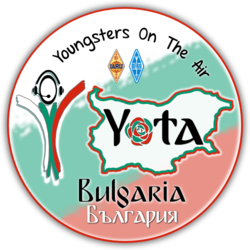 representatives, the YOTA participants joined local residents and a performing troupe in dancing to traditional Bulgarian folk music. Approximately 80 young radio amateurs from 28 countries have been engaged in activities ranging from operating the camp station LZ19YOTA, to kit building and antennas, sightseeing, and getting acquainted.
representatives, the YOTA participants joined local residents and a performing troupe in dancing to traditional Bulgarian folk music. Approximately 80 young radio amateurs from 28 countries have been engaged in activities ranging from operating the camp station LZ19YOTA, to kit building and antennas, sightseeing, and getting acquainted.(1).jpg) group work, and the Train The Trainer (TTT) program -- instituted at last year's Summer Camp -- have been among the activities. TTT is aimed at imparting skills, ideas, and knowledge that attendees can use to initiate similar youth activities back home.
group work, and the Train The Trainer (TTT) program -- instituted at last year's Summer Camp -- have been among the activities. TTT is aimed at imparting skills, ideas, and knowledge that attendees can use to initiate similar youth activities back home.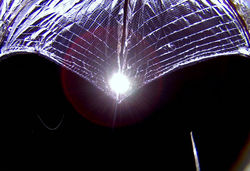
.jpg) Applications for the 2020 ARRL Foundation Scholarship Program will be accepted between September 1 and December 31, 2019. All applicants must be FCC-licensed radio amateurs, and many scholarships have other specific requirements, such as intended area of study, license class, or residence within a particular ARRL Division, Section or state. Applicants should review the scholarships and check off the ones for which they are eligible. If you complete an online application, you must also
Applications for the 2020 ARRL Foundation Scholarship Program will be accepted between September 1 and December 31, 2019. All applicants must be FCC-licensed radio amateurs, and many scholarships have other specific requirements, such as intended area of study, license class, or residence within a particular ARRL Division, Section or state. Applicants should review the scholarships and check off the ones for which they are eligible. If you complete an online application, you must also .JPG) The World Wide Radio Operators Foundation (
The World Wide Radio Operators Foundation (







